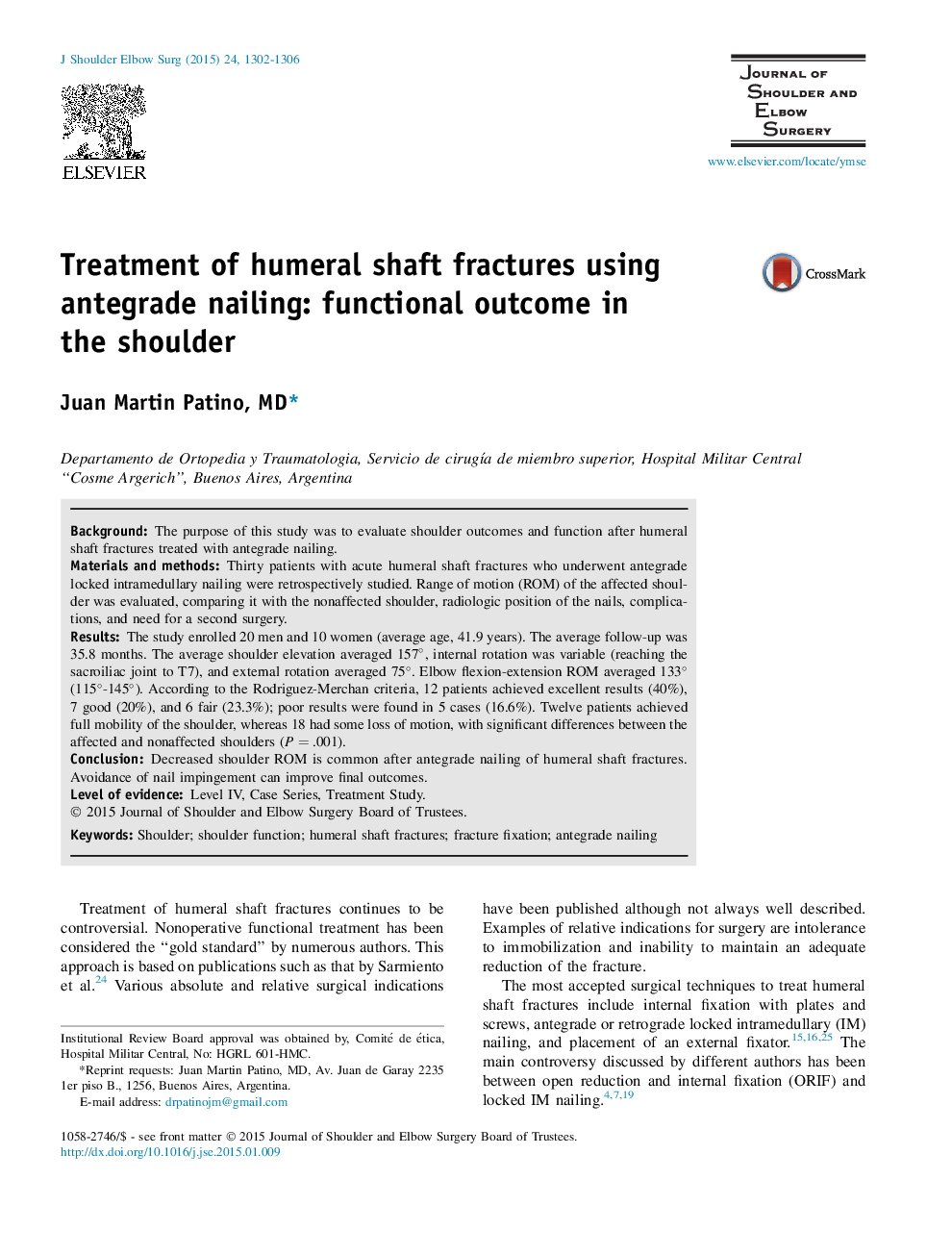| Article ID | Journal | Published Year | Pages | File Type |
|---|---|---|---|---|
| 6210920 | Journal of Shoulder and Elbow Surgery | 2015 | 5 Pages |
BackgroundThe purpose of this study was to evaluate shoulder outcomes and function after humeral shaft fractures treated with antegrade nailing.Materials and methodsThirty patients with acute humeral shaft fractures who underwent antegrade locked intramedullary nailing were retrospectively studied. Range of motion (ROM) of the affected shoulder was evaluated, comparing it with the nonaffected shoulder, radiologic position of the nails, complications, and need for a second surgery.ResultsThe study enrolled 20 men and 10 women (average age, 41.9 years). The average follow-up was 35.8 months. The average shoulder elevation averaged 157°, internal rotation was variable (reaching the sacroiliac joint to T7), and external rotation averaged 75°. Elbow flexion-extension ROM averaged 133° (115°-145°). According to the Rodriguez-Merchan criteria, 12 patients achieved excellent results (40%), 7 good (20%), and 6 fair (23.3%); poor results were found in 5 cases (16.6%). Twelve patients achieved full mobility of the shoulder, whereas 18 had some loss of motion, with significant differences between the affected and nonaffected shoulders (P = .001).ConclusionDecreased shoulder ROM is common after antegrade nailing of humeral shaft fractures. Avoidance of nail impingement can improve final outcomes.
